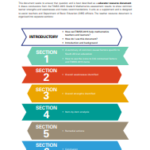TIMSS ITEM DIAGNOSTIC REPORT: SOUTH AFRICA GRADE 9 MATHEMATICS
Common contextual factors and icons

Central to the learner performance in assessments (both national and international) in mathematics is the ability to solve problems. The National Curriculum Statement Grades R-12 (DBE, 2011) specifies that it aims to produce learners that are able to identify and solve problems and make decisions using critical and creative thinking. The National Council of Teachers of Mathematics (NCTM) has strongly endorsed and to a greater extent encouraged the inclusion of problem solving in school mathematics (1980, 1989). Jitendra and Star (2011) argue that one of the reasons why the learners are struggling with problem solving and therefore lag behind those who perform well is that problem solving is not well addressed in many mathematics textbooks. This argument can be taken even further: that there are insufficient problem-solving activities in mathematics classrooms. As a result, learners find it very difficult when they encounter problem-solving activities in various forms and levels of assessment. Giganti (2007) argues that there are three parts to learning mathematics: skills, concepts, and solving problems. Skills are the tools of mathematics, such as the ability to add and manipulate numbers. Concepts are the ideas in mathematics, such as the concept of a triangle. Problem solving is the ability to apply mathematics in different situations.
